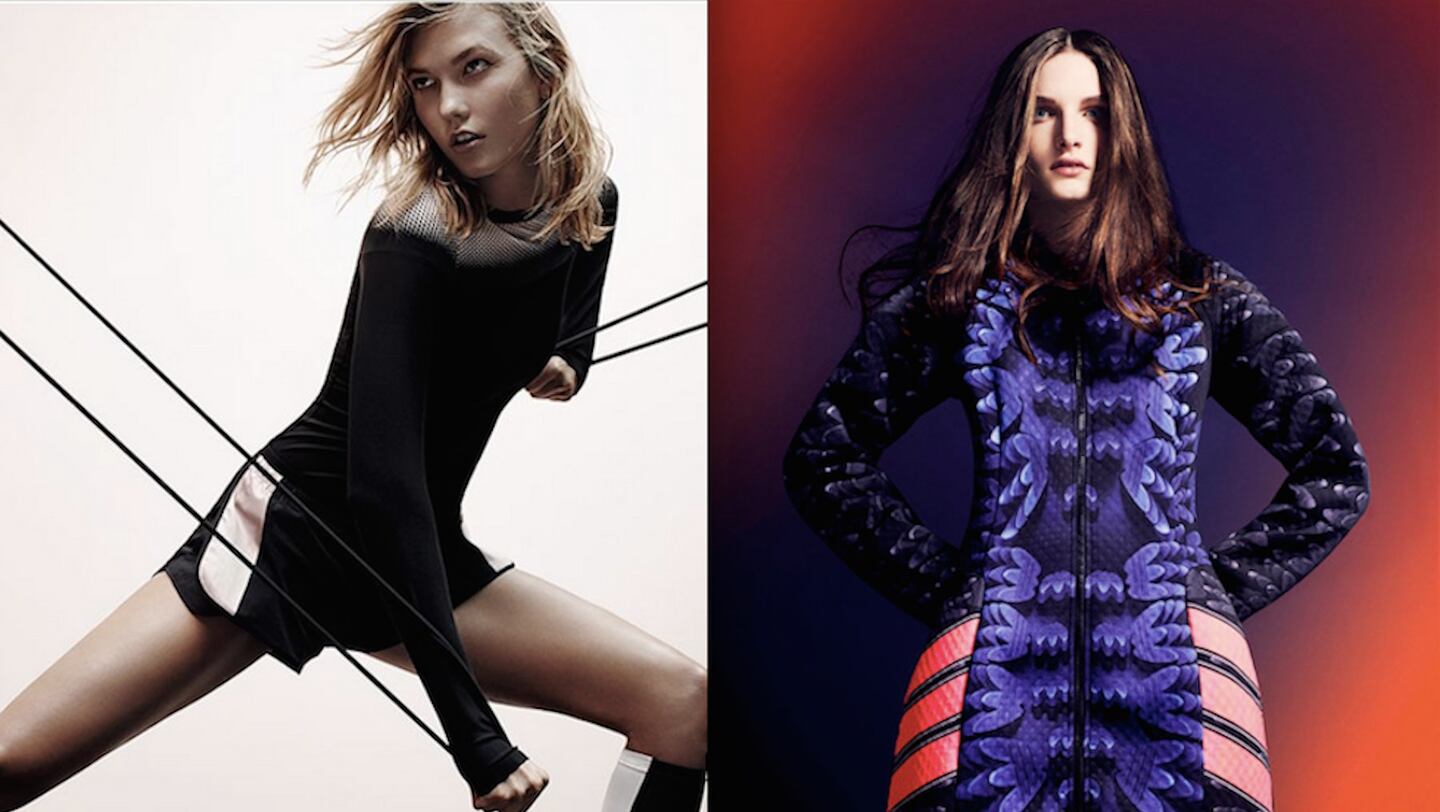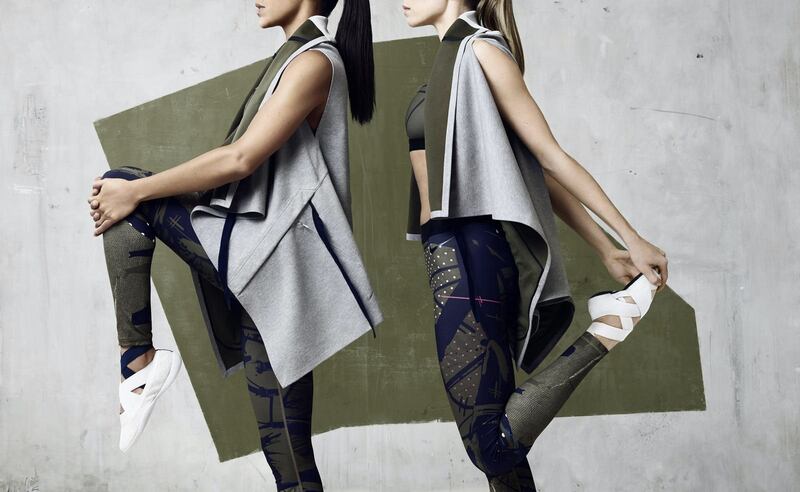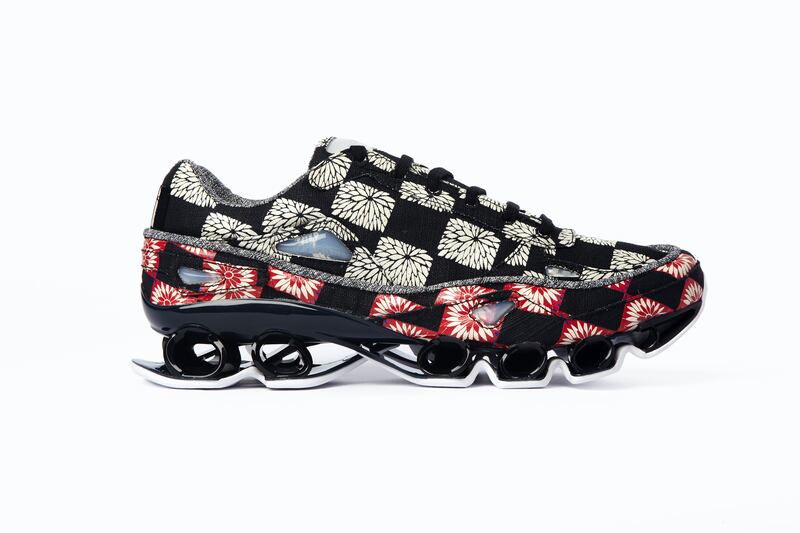
The Business of Fashion
Agenda-setting intelligence, analysis and advice for the global fashion community.

Agenda-setting intelligence, analysis and advice for the global fashion community.

LONDON, United Kingdom — On Monday, Nike launched a new capsule collection, dubbed NikeLab x JFS, with Berlin-based Acronym designer Johanna F. Schneider. On Thursday evening, at Paris men's fashion week, Adidas is set to unveil a new collaboration with Junichi Abe's Kolor. Together, the launches are the latest in a crescendo of fashion-related activities by the world's top sportswear brands, whose core identities have long been more squarely rooted in athletic performance.
Traditionally aligned with athletes, Nike recently began working with fashion model Karlie Kloss on a major women's marketing campaign. Though Kloss is a former ballet dancer who practices yoga, the company has never before partnered with a fashion model on this kind of scale. What's more, in October, Nike staged a high-profile fashion show in New York as part of its "Women's Innovation Summit" — attended by scores of fashion editors and featuring Kloss and a small army of models — to unveil its collaboration with Brazilian designer Pedro Lourenço.
Meanwhile, on top of its longstanding lines developed in partnership with Stella McCartney (Adidas by Stella McCartney) and Yohji Yamamoto (Y-3), in recent cycles, Adidas has launched a flurry of fashion collaborations with designers including Raf Simons, Rick Owens, Mary Katrantzou and Jeremy Scott.
So, why the uptick in fashion activities from the world’s top two sportswear giants?
ADVERTISEMENT
One of the things that we recognise, certainly in the women's business, is that there is no performance without style.
For Nike, a critical factor is the growth of its women’s business and the women’s activewear market overall, to which fashion and style are key. “[Nike] has a $5 billion women’s business and most times people have no idea how large we are. By 2017, we plan to be $7 billion,” said Nike president Trevor Edwards. “We are seeing growth in the performance segments — running and training — and in terms of the style and look that comes from that. Tights are the new denim. We have seen that women interact more seamlessly across running, workout, fitness and lifestyle. We see all those things blend.”
“One of the things that we have learned is the speed at which we have to flow goods into the market,” Edwards continued. “Our frequency is much higher for women’s. Plus, you have got to spread much wider variation on colour. It is still grounded in a great performance product, but the expression of it is much more important. Constantly changing that expression and giving her new looks, new experiences, is a key part of what we do. One of the things that we recognise, certainly in the women’s business, is that there is no performance without style.”

NikeLab x JFS | Source: Nike
“Nike isn’t a fashion brand. We’re listening to the needs of the athletes and we’re solving them with innovative solutions. But we’re acknowledging the fashion side of [women’s] experience with sport. Women don’t have to choose between highly functional, technical product and fashionable product,” added Julie Igarashi, Nike’s vice president of global design for women's training.
For Adidas, fashion collaborations are a way of expanding the company's creative ecosystem and keeping consumers engaged and excited by the Adidas brand in a fast moving market. "These days the pace has become so fast. People go to verticals, like H&M and Zara, and expect new products every month. Even with high fashion labels, it's the cruise collection and pre-collections; every three months you get something new," said Dirk Schönberger, creative director of Adidas' sport style division. "We are a very commercial brand, so, of course, we have to deliver — at a minimum every week — something that excites the consumer. The verticals and the [speed of the] Internet have changed the way we do things."

Adidas by Raf Simons | Source: Adidas
“Sports style is really a giant consumer vertical; it’s very lifestyle sportswear, so there is much more of a fashion element,” he continued. “It’s what our consumer wants. It’s an essential part of the brand… I think what is intriguing and great about Adidas is the bandwidth of this brand, that it can go from high performance athletic wear to something that attracts the young lifestyle consumer.”
But according to Schönberger, the success of Adidas’ recent fashion collaborations is better measured in terms of brand metrics than sales. “Adidas has always been known for breaking rules and doing something unexpected. This is something that we want any collaboration to deliver. I think the success is not wholly financial; it’s how people are starting to look at Adidas. It helps us to create a lot of energy for the brand. And, it makes people look again, on a deeper level, at the Adidas product.”
“It is the moment of sportswear in fashion,” added Schönberger. “We will see new shoes and apparel dropping: first from Pharrell and then Kanye will follow, then the continuation of our partnership with Raf Simons and Rick Owens. At the moment I am very happy.”
From analysis of the global fashion and beauty industries to career and personal advice, BoF’s founder and CEO, Imran Amed, will be answering your questions on Sunday, February 18, 2024 during London Fashion Week.
The State of Fashion 2024 breaks down the 10 themes that will define the industry in the year ahead.
Imran Amed reviews the most important fashion stories of the year and shares his predictions on what this means for the industry in 2024.
After three days of inspiring talks, guests closed out BoF’s gathering for big thinkers with a black tie gala followed by an intimate performance from Rita Ora — guest starring Billy Porter.